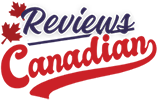-
Mobile Only Price: What Hoteliers Need to Know About Rate Discounts – Image Credit Lighthouse
A quick Google of “mobile phone stats and hotel booking” will elicit a range of results that won’t surprise you about their prevalence in this space.
Whether it’s how often they’re used when searching for accommodation (more than 50% and rising), the proportion of booking made using a phone (just under half), and the proportion used specifically for last-minute bookings (more than half). The evidence is clear and expected, they’re easy to use and if a traveler is in the mood to book, they will.
To capitalize, hoteliers must have strong promotional and revenue management strategies in place to fully fully utilize mobile booking channels.
In this short article, we discuss:
-
What mobile only price promotions are
-
How they work
-
Other common booking discounts that are suitable for mobile phone users
-
How such promotions affect hotel revenue management
Mobile only price is a discount for mobile bookings
A mobile only price is exactly what you’d think it is: a price – usually a discount – that’s only available to users accessing a mobile booking app on their device.
The booking site or mobile app is usually an online travel agent (OTA), such as Booking.com or Expedia, and, as a hotel revenue manager, you can control the process – which online travel agencies it applies to, what the mobile rate is, how long the promotion lasts for, what these promotions look like on a mobile browser etc – using a channel manager.
As we’ve established, hoteliers are motivated to engage with such promotions because mobile phones are so dominant in the travel search space and, when the right discount is applied, conversion rates improve. Crucially, though:
-
Mobile users are slightly skewed towards millennials and younger
-
Their habits, at least when searching on their mobiles to book travel, tend to be more impulsive
-
By focusing some of your efforts on these activities, you boost your recognition and reputation on OTAs
These factors inform the exact nature and tactics hoteliers implement on mobile channels. It’s all about capturing booker’s interest in the moment and encouraging and facilitating future activity through encouraging mobile app downloads. You can also consider app only promotions.

4 Other common booking discounts and rewards
Of course, offering a one-size-fits all mobile-only discount isn’t the only way to reach these users. These four types of promotional scheme dovetail nicely for this demographic and can work well on a mobile website.
Let’s take a look.
1. Country rates
Country rates or geo-fencing as it’s sometimes known are targeted discounts or pricing adjustments offered to customers based on their geographic location.
Hotels and OTAs use these rates to customize prices for guests in specific countries, allowing them to adjust offers according to local demand, economic conditions, or spending habits. These discounts are often applied by detecting the user’s IP address or location data during the booking process.
Such discounts might be used to increase bookings in underperforming markets or to attract guests from regions where travel demand is lower.
For instance, if a hotel sees low booking volumes from certain countries or wants to tap into emerging travel markets, a country rate discount can make the property more appealing to those travelers.
Additionally, these rates can help hotels maintain a competitive edge by tailoring pricing strategies that consider local competition and market trends, optimizing revenue potential across multiple regions.
2. Loyalty programs
Loyalty programs are structured rewards systems that hotels and OTAs use to encourage repeat bookings by offering incentives to returning guests. Typically, members earn points or perks with each stay or booking, which can be redeemed for discounts, upgrades, free nights or exclusive services.
The idea is to create added value for frequent guests, making the experience more rewarding and personalized.
As a hotelier (or OTA), establishing loyalty programs helps build brand loyalty and cultivates long-term relationships with customers. In a competitive market, loyalty programs help retain guests by incentivizing repeat bookings, which reduces the need for constant new customer acquisition.
These programs also provide valuable data on guest preferences and behaviors, enabling tailored offers that can drive additional revenue.
By delivering rewards and personalized experiences, loyalty programs can foster emotional connections with guests, encouraging them to choose the same brand over competitors in future travel decisions.

3. Special offers
Special offers are targeted promotions that hotels (and OTAs) use to attract bookings by providing guests with added value, such as discounts or exclusive perks.
These offers work by incentivizing specific booking behaviors, often aimed at filling rooms during low-demand periods, encouraging longer stays or attracting group bookings. Special offers are designed to appeal to different guest segments and increase overall occupancy and revenue.
Common examples of special offers include:
-
Early-bird discounts for booking in advance
-
Package deals that include breakfast or spa services
-
Discounts for booking multiple rooms (great for families or groups)
-
Extended-stay discounts (e.g., stay three nights, get the fourth free)
-
Last-minute discounts for unsold rooms and limited time deal promotions
Hotels and OTAs may offer these discounts to boost occupancy during off-peak times, encourage group travel, or introduce new services.
Among other benefits to you as a revenue manager, special offers create urgency, attract price-sensitive potential guests and help balance revenue across different demand periods.
4. Price per guest
Price per guest (PPG) rates are pricing structures where the cost of a room varies based on the number of guests staying. Rather than charging a flat rate per room, hotels and OTAs using this model set rates that increase with each additional guest, covering the added expenses associated with more occupants, like extra linens, amenities and breakfast costs if included.
Hotels and OTAs may opt for a PPG model to more accurately align room pricing with operational costs, especially for rooms that can accommodate families or groups.
This model is particularly beneficial when catering to diverse guest types, as it provides a fairer pricing structure based on occupancy. It can also drive incremental revenue by allowing hotels to recoup additional service expenses.
The PPG approach is popular in regions or properties where rooms are commonly shared by families or groups, ensuring that pricing remains transparent and aligned with actual guest use.
Note also that, in the case of groups, there’s a certain appeal to travelers on a budget, who don’t want to fork out for more than one room – something that very much applies to the youth market we describe above and their reliance on mobile phones.

How do discounts and rewards impact hotel revenue management?
Discounted rates and rewards programs are effective tools for driving travel bookings and maximizing occupancy. By offering price incentives, you can attract guests during slower periods or encourage repeat bookings, helping to fill rooms that might otherwise go vacant.
It’s also worth noting that OTAs are great tools for revenue managers to bring new guests into the hotel, due to their widespread popularity among potential bookers, but it’s then up to your operations team to convert that guest to a repeat customer, booking direct on your website..
Rewards programs, which give guests perks like free nights or room upgrades, build loyalty, which motivates guests to book directly rather than through third parties. Both strategies foster a stronger connection with the brand, encouraging repeat stays and positive word-of-mouth referrals.
However, while discounts and rewards increase bookings, they also impact on profitability. Heavily discounted rates can cut into revenue per room, and rewards programs require careful management to avoid overwhelming operational costs.
The key is for hoteliers and revenue managers to balance these offers strategically. By setting restrictions (e.g., offer discounts only during low-demand periods) or creating tiered rewards that encourage more spending, you can ensure that offers drive revenue rather than reduce it.

Learn how to boost bookings and drive revenue with a data-driven pricing strategy
At the heart of all modern revenue management is a well-defined pricing strategy and mobile only room pricing discounts is becoming a key component of success.
By using a rate shopping tool, you can gain real-time insights into market trends and competitor pricing, enabling you to craft strategic mobile-exclusive offers that attract the growing number of travelers booking via smartphones.
Rate Insight by Lighthouse, includes a strategy feature which presents a high level overview of long term pricing and promotional strategies. It uncovers the mobile discounting strategy of your competitors in one quick glance, empowering you to make smarter strategic decisions around your own mobile pricing.
By aligning your strategy with insights from Rate Insight, you can ensure your mobile-specific pricing and wide room pricing remains competitive and well-optimized for market demand, to maximize your revenue potential. Find out more here.
About Lighthouse
Lighthouse (formerly OTA Insight) is the leading commercial platform for the travel & hospitality industry. We transform complexity into confidence by providing actionable market insights, business intelligence, and pricing tools that maximize revenue growth. We continually innovate to deliver the best platform for hospitality professionals to price more effectively, measure performance more efficiently, and understand the market in new ways.
Trusted by over 65,000 hotels in 185 countries, Lighthouse is the only solution that provides real-time hotel and short-term rental data in a single platform. We strive to deliver the best possible experience with unmatched customer service. We consider our clients as true partners – their success is our success.






/cdn.vox-cdn.com/uploads/chorus_asset/file/25606870/STK445_ADVERTISING_STK093_GOOGLE_F.jpg)








